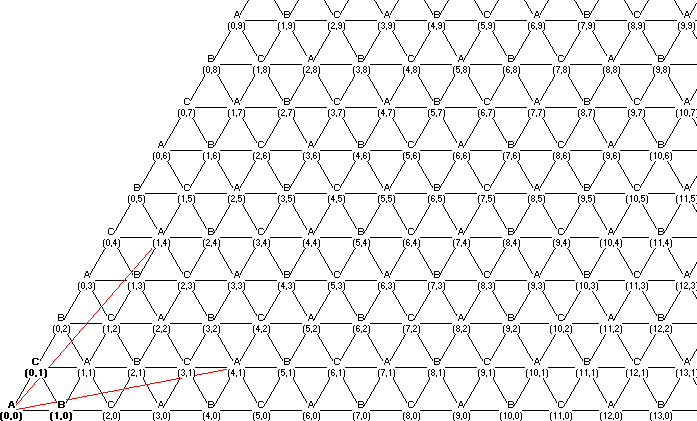Source: Many sources, submitted by Ravi Subramanian.
To see this, tesselate one sixth of the plane with replicas of the billiard table as in the attached diagram. Each vertex of the tesselation is represented by an ordered pair of pseudo-coordinates (x,y). Furthermore, each vertex corresponds to a corner of the original billiard table. A line drawn from the origin to any vertex of the tesselation represents a ball that reaches the corresponding corner. The number of tesselation edges on the diagram which this line crosses is the number of bounces. The red lines on the diagram illustrate the solution to question 2 above.
